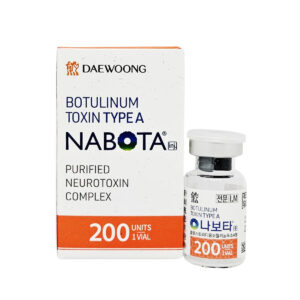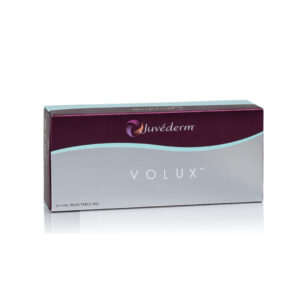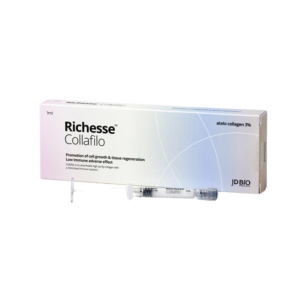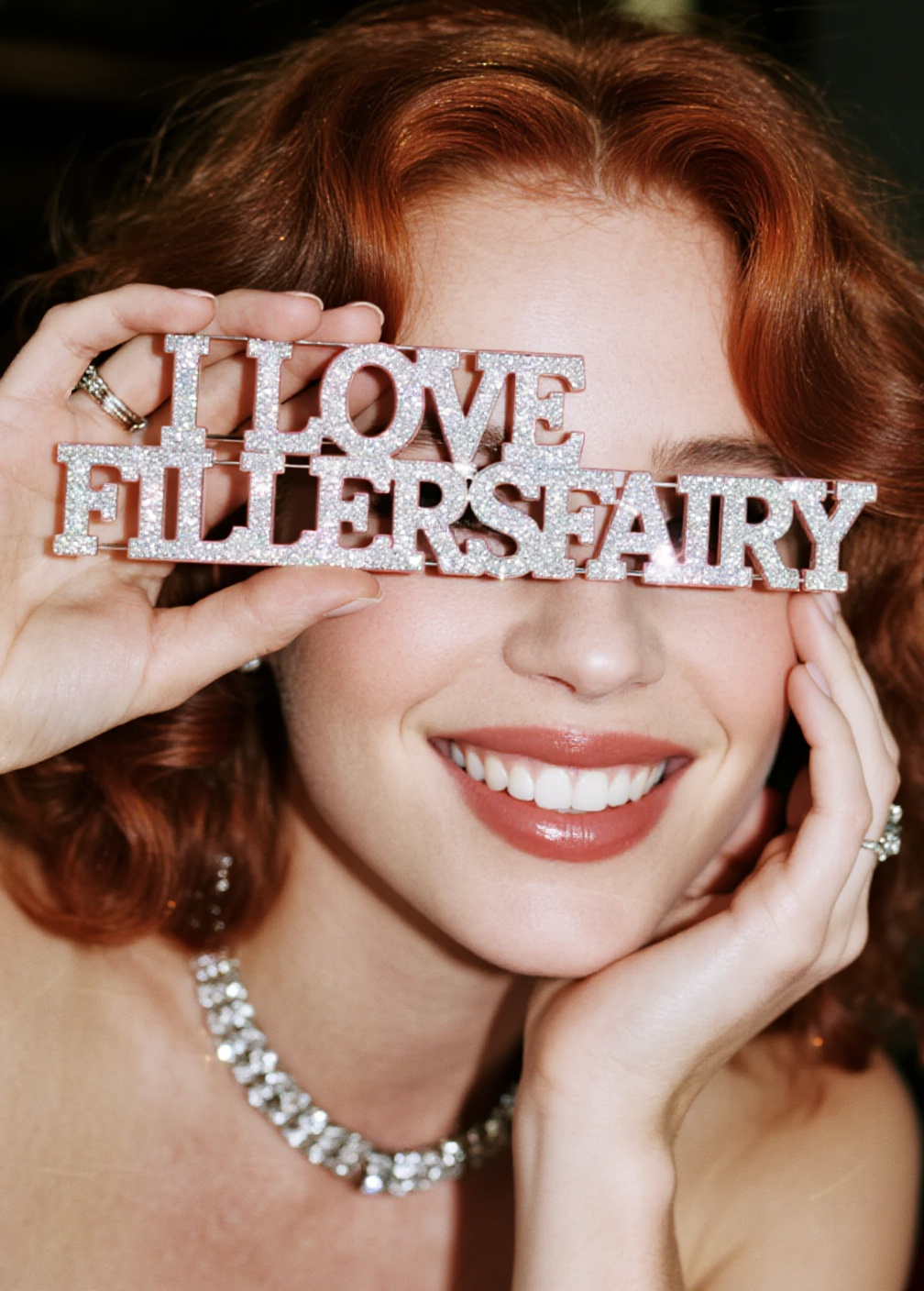No products in the cart.
Need help? Write to us support@fillersfairy.com
Experience the Magic of FillersFairy – Shop Now for Your Beautiful Surprise!
- DERMAL FILLER
- BODY FILLER
- SKIN BOOSTER
- NCTF 135HA
- DIVA EYE PN
- DIVA FACE PN
- AMI NAD+
- NadReju
- Miracle Touch BR
- Miracle Touch Up
- Regenovue Aqua Shine Plus
- Vitaran i
- Vitaran i 2
- Hyalace
- Elaxen PN
- PuriColl
- Rejeunesse Sparkle
- ASCE+ IRLV
- AestheFill
- AETER PURI EYES
- Ami Eyes
- Aqua Exosome
- ASCE Plus SRLV
- Celosome Aqua
- Curenex Glow
- Cytocare
- Exo-one
- High Inj
- Hyaron
- Juvederm Skinvive
- Kiara Reju
- Lapuroon
- Miracle
- Puri Hilo PN
- Puri Pdrn
- Purilips
- Rejuran
- Revitrane HA20
- Richesse Collafio
- Save B32
- Save B32SP
- BOTULINUM TOXIN
- FAT DISSOLVING
- HAIR TREATMENT
- IV THERAPY
- NUMBING CREAM
- PLLA/PCL/CA+
- CONSUMABLES
- THREAD
- AESTHETIC COSMETICS
- PEELING
Сall our consultants or Chat Online
+1(912)5047648
- DERMAL FILLER
- BODY FILLER
- SKIN BOOSTER
- NCTF 135HA
- DIVA EYE PN
- DIVA FACE PN
- AMI NAD+
- NadReju
- Miracle Touch BR
- Miracle Touch Up
- Regenovue Aqua Shine Plus
- Vitaran i
- Vitaran i 2
- Hyalace
- Elaxen PN
- PuriColl
- Rejeunesse Sparkle
- ASCE+ IRLV
- AestheFill
- AETER PURI EYES
- Ami Eyes
- Aqua Exosome
- ASCE Plus SRLV
- Celosome Aqua
- Curenex Glow
- Cytocare
- Exo-one
- High Inj
- Hyaron
- Juvederm Skinvive
- Kiara Reju
- Lapuroon
- Miracle
- Puri Hilo PN
- Puri Pdrn
- Purilips
- Rejuran
- Revitrane HA20
- Richesse Collafio
- Save B32
- Save B32SP
- BOTULINUM TOXIN
- FAT DISSOLVING
- HAIR TREATMENT
- IV THERAPY
- NUMBING CREAM
- PLLA/PCL/CA+
- CONSUMABLES
- THREAD
- AESTHETIC COSMETICS
- PEELING
Revolax filler results typically last between 9 to 12 months. The longevity depends on the specific product variant—Revolax Deep lasts up to 12 months for deep volume restoration, while Revolax Sub-Q can last similarly for sculpting cheeks and chin. Individual metabolism and injection area also influence duration.
Table of Contents
ToggleTypical Duration Period
Clinical studies and user reports consistently show that results are not permanent but offer significant longevity. On average, most individuals can expect the primary effects to be maintained for 9 to 12 months. However, this isn’t a fixed number; the duration is a range influenced by several key factors, which we will detail below. Understanding this timeline helps in planning your treatment schedule and budget.
The longevity of Revolax is primarily tied to the specific product variant used and its intended application. The two main types differ in their particle size and cross-linking density, which directly impacts how long they persist under the skin.
Revolax Deep: This formulation is designed for correcting moderate to severe wrinkles and folds, such as nasolabial folds (the lines from your nose to mouth). It has a finer consistency.
Lasts an average of 9 to 10 months before the body’s natural hyaluronidase enzymes break down a significant portion of the gel. Patients often report noticing a gradual softening of results around the 8-month mark, with a top-up typically needed within a year.
Revolax Sub-Q: This is a more robust formulation intended for deep subcutaneous implantation to restore volume in areas like the cheeks and chin.
Its larger particle size and higher density make it more resistant to degradation. Consequently, it boasts a longer average duration of 12 to 18 months. In some cases, particularly in the cheeks, results can persist for up to 24 months, though this is less common.
A pivotal factor is the metabolic rate of the injection area. Highly dynamic areas with constant muscle movement break down filler much faster.
For example, fillers in the lips (a high-movement area) will typically last 20-30% less time than filler placed in the static mid-cheek area. A Revolax Deep treatment in the lips may only last 6-8 months before a refresh is desired.
The initial amount of product used also plays a role. A larger volume injected provides a more substantial “depot” of gel for the body to metabolize, which can slightly prolong the perceived duration. For instance, a 2ml cheek treatment with Revolax Sub-Q will often appear to last longer than a 0.5ml treatment because the volume loss as it dissolves is less noticeable.
Factors Influencing Longevity
While Revolax fillers have a projected duration of 9 to 18 months, your individual experience will vary. The actual longevity of the product is not a fixed number but a result of a complex equation involving your biology, lifestyle, and technical factors. Understanding these variables is key to setting realistic expectations. For instance, two individuals receiving the same 1ml of Revolax Sub-Q in the cheeks can see a difference in longevity of up to 6 months based solely on their metabolic rate and lifestyle choices.
Your body’s innate metabolic speed is the primary dictator of how quickly hyaluronic acid (HA) filler is broken down. Individuals with a faster metabolism, often linked to a younger age (e.g., in their 20s), higher muscle mass, or a very active lifestyle, will process filler at an accelerated rate. This can reduce its duration by 20% or more compared to someone with a slower metabolic rate. The injection site’s mobility is another critical factor. Areas with over 50 facial expressions per hour, like the lips and around the mouth (marionette lines), create constant mechanical stress on the filler, accelerating its breakdown. Filler in these high-movement zones may last only 6 to 8 months. In contrast, a static area like the chin or the mid-cheek, with minimal muscle activity, allows the filler to remain largely undisturbed, often yielding results that persist for the full 12 to 18-month range.
Your lifestyle habits directly impact longevity. Extensive sun exposure without SPF 50+ protection introduces UV radiation that accelerates the degradation of HA and the surrounding collagen, potentially shortening filler life by several months. Similarly, high levels of consistent stress and poor sleep quality can increase cortisol levels, which may heighten inflammatory responses and subtly increase the rate of metabolism. While a single night of poor sleep has negligible impact, chronic issues can contribute to a cumulative effect. Smoking is a significant factor; the chemicals in tobacco smoke damage skin collagen and elastin and impair blood flow, creating a less hospitable environment for filler, potentially reducing its lifespan by 25-30%.
The expertise of your injector is a non-biological factor with massive impact. A practitioner’s skill determines the precise depth of injection—whether it’s placed in the deep dermis, subcutaneous fat, or on bone. Incorrect placement, such as a product meant for deep injection being placed too superficially, subjects it to greater muscular pressure and vascularity, leading to a faster breakdown that could slash its duration by half. The right product choice is also crucial; using the softer Revolax Deep for deep volume restoration in the cheeks will lead to quicker dissipation compared to the more robust Revolax Sub-Q, which is specifically formulated with a higher viscosity and particle concentration for such areas.
Comparison with Other Fillers
Choosing a dermal filler involves comparing longevity, cost, and ideal use cases. Revolax occupies a specific niche in the market, often positioned between well-established premium brands and more economical alternatives. Its key selling point is offering longevity that rivals top-tier products at a potentially lower cost per month. For example, a 1ml syringe of Revolax Sub-Q, lasting 12-18 months, presents a different value proposition than a Juvederm product lasting a similar duration but with a 15-20% higher initial price point.
| Filler Brand (Common Types) | Typical Longevity (Months) | Key Best Use Areas | Relative Cost Index (1 = Lowest) |
|---|---|---|---|
| Revolax (Deep, Sub-Q) | 9 – 18 | Lips, Cheeks, Nasolabial Folds | 2.5 |
| Juvederm (Ultra, Voluma) | 9 – 18 | Lips, Cheeks, Nasolabial Folds | 4.0 |
| Restylane (Lyft, Kysse) | 9 – 15 | Cheeks, Lips, Hands | 3.5 |
| Teosyal (RHA) | 9 – 15 | Dynamic Areas, Lips | 3.0 |
| Belotero (Balance, Intense) | 6 – 12 | Fine Lines, Under-Eyes | 3.0 |
When placed directly against market leader Juvederm, the clinical performance is remarkably similar. Both brands use cross-linked HA and have products tailored for specific depths and areas. For instance, Revolax Sub-Q and Juvederm Voluma are both indicated for cheek augmentation and show a nearly identical median longevity of 15 months in clinical settings. The primary difference often lies in the viscosity (resistance to flow) and elasticity (ability to bounce back after deformation). Some practitioners report that Juvederm’s formulations have a slightly higher G-prime (elasticity), which can make it their preferred choice for projects requiring extreme structural support, though Revolax provides excellent results for the vast majority of volume cases.
Compared to the Restylane family, which uses a different NASHA technology, Revolax tends to have a comparable longevity profile. A key distinction emerges in lip treatments. Many injectors find Restylane Kysse, specifically engineered for lips, has a flexibility rate that makes it a favorite for natural movement, potentially lasting a consistent 12 months there. Revolax Deep is effective for lips but may show a slightly higher rate of breakdown in this mobile area, around the 8 to 10-month mark on average. For cheek augmentation, however, Revolax Sub-Q and Restylane Lyft are virtually interchangeable in terms of duration and effect, with cost often becoming the deciding factor.
The value proposition of Revolax becomes clearest when compared to more budget-friendly options. While cheaper fillers might have an initial price 30% lower, their longevity is often significantly shorter, typically in the 6 to 9-month range. This means you might require touch-up treatments twice a year instead of once a year with Revolax, ultimately increasing your long-term annual cost by an estimated 25%. Revolax’s durability provides a lower cost-per-month figure, making it a financially savvy choice for patients focused on sustained results rather than just the initial price tag.
Aftercare for Best Results
The first 72 hours after your Revolax injection are the most critical for determining the final outcome and longevity of your results. Proper aftercare isn’t just about avoiding complications; it’s an active process that can influence how the filler integrates into your tissue and how long it lasts. Studies suggest that meticulous aftercare can improve longevity by up to 15%, protecting your investment and ensuring optimal, natural-looking results. The actions you take immediately post-treatment directly impact swelling, bruising, and the risk of migration.
Your immediate actions can significantly reduce downtime and set the stage for success. Applying a clean, cold compress (wrapped in a cloth) to the treated areas for 10-minute intervals with 20-minute breaks over the first 6 hours is proven to reduce swelling by up to 40% compared to doing nothing. This vasoconstriction slows blood flow to the area, minimizing bruising. Remaining upright for at least 4 hours post-injection and avoiding strenuous exercise for a full 48 hours is non-negotiable; these actions prevent a dramatic increase in blood pressure that can displace filler before it has fully set.
| Time Period After Injection | Key Action | Rationale & Data Benefit |
|---|---|---|
| First 24 Hours | Avoid makeup, excessive touching, and high-heat environments (saunas, hot yoga). | Reduces bacterial introduction risk (>90%) and prevents heat-induced swelling that can distort results. |
| First 48 Hours | Sleep on your back, elevated with 2+ pillows. | Applies ~0.5 psi less pressure on cheeks/lips per hour than side-sleeping, drastically reducing asymmetry risk. |
| First 72 Hours | Gently massage areas as directed (only if instructed for certain products). | For specific formulations, this can ensure even distribution with minimal pressure (<1 psi force). |
| First 2 Weeks | Strictly avoid dental procedures, facials, and laser treatments. | Dental visits introduce a >60% higher risk of bacterial spread via bloodstream to the filler site. |
What you consume plays a role. Staying hyper-hydrated by drinking a minimum of 2 liters of water per day helps the hyaluronic acid bind to water molecules, potentially enhancing plumpness and integration. Conversely, for the first 48 hours, it’s advisable to avoid alcohol, which can cause vasodilation and increase bruising volume by approximately 30%, and high-sodium foods, which can exacerbate fluid retention and prolong swelling by 1-2 days.
A critical long-term habit is daily sun protection. UV-A/UV-B radiation breaks down collagen and elastin and can accelerate the metabolic breakdown of hyaluronic acid filler. Using a broad-spectrum SPF 50+ sunscreen every single day can preserve the filler and the surrounding skin’s integrity, extending the perceived duration of your results by several months. Integrating a consistent skincare routine with hyaluronic acid serums can maintain skin hydration levels around the filler, supporting a consistently voluminous appearance.
Signs It’s Time for a Top-up
Most people will begin to notice a subtle return to their pre-treatment baseline around the 9-month mark, with the effects becoming more apparent by month 12. Recognizing the signs of this natural dissipation allows you to plan a timely top-up, typically requiring 20-30% less product than the initial treatment to restore the original volume and effect. Scheduling a touch-up before the filler has completely metabolized ensures a consistently smooth appearance.
The most reliable indicator is a visible and tangible loss of volume. This isn’t about a sudden change, but a slow regression you might notice in photographs or daily life.
- Cheeks: The lifted, full appearance begins to soften. You might notice a recurrence of under-eye hollows or a slight descent of the mid-face, which can make you look tired. The apple of the cheek, which was once rounded, may lose approximately 15-20% of its projected volume.
- Lips: The vermillion border (the sharp outline) starts to lose definition, and the lip body appears less plump. You might find yourself reapplying lipstick more frequently because the color bleeds slightly due to the loss of structural support.
- Nasolabial Folds & Marionette Lines: These lines, which were softened by 80-90% post-injection, begin to reappear at about 40-50% of their original depth. They are most noticeable in direct, overhead lighting where shadows become more defined.
Another clear sign is a change in skin texture and resilience. When the filler was fresh, your skin likely had a taut, smooth quality due to the underlying support. As the HA is metabolized, that supportive scaffold diminishes. You may feel the skin is less firm to the touch, or when you press gently on a treated area like the cheek, it feels softer and offers less resistance than it did in the first 6 months post-injection. This loss of underlying structure is a key physiological signal.
The optimal timing for a top-up is typically between 10 to 14 months for most patients. This schedule capitalizes on the fact that a residual amount of filler is still present. Because of this, a maintenance session often requires only 0.5ml of product compared to the 1.0ml or 1.5ml used in the initial session, representing a 30-50% reduction in volume and cost. Injecting a smaller amount into the existing framework is more efficient and helps maintain a natural look without the risk of over-correction. Waiting until the filler is completely gone, which can happen around the 18-month point for Sub-Q, means starting from zero, which requires more product, a higher cost, and a longer recovery time.
Expected Treatment Costs
A single 1ml syringe of Revolax typically ranges from 300to500, but the final bill is influenced by multiple variables. For a comprehensive treatment plan involving multiple areas, total costs can easily range from 800to1,500, making it crucial to budget effectively for both initial and maintenance sessions.
The total fee you pay is broken down into several key components:
- Product Cost: This is the base price for the Revolax itself. A 1ml syringe of Revolax Deep or Sub-Q has a wholesale cost to clinics, but your charge covers this plus overhead. This cost can fluctuate based on the clinic’s supplier and volume of purchases.
- Practitioner’s Fee: This is the cost for the injector’s skill, time, and expertise. A highly experienced, in-demand dermatologist or plastic surgeon may charge a 50-100% higher fee than a newly certified nurse injector at a medspa. This fee often constitutes 40-60% of your total cost.
- Clinic Location & Overhead: A clinic in a major metropolitan area (e.g., Manhattan, London) has significantly higher rent and operational costs than one in a suburban or rural town. This geographic variance can cause the price for the exact same syringe and service to differ by 20-35%.
- Number of Syringes Used: Treating the cheeks to restore volume lost over 5 years may require 2-3 syringes in a single session, instantly doubling or tripling the base product cost. A subtle lip enhancement might only use 0.5ml, cutting the product fee in half.
While Revolax may have a similar upfront cost to some other brands, its potential longevity of 12-18 months means you might need fewer touch-up sessions over a 3-year period. A cheaper filler priced 20% lower but lasting only 8-10 months becomes more expensive over time because it requires more frequent applications.
Recommended Products
Juvederm® Volux Lidocaine Dermal Filler with 2×1ml Prefilled Syringes
$232.00
Add to cart
Rated 5.00 out of 5















